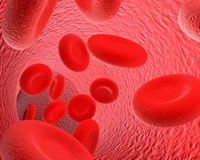Chronic
Hepatitis B Patients with Liver Cirrhosis Are at Risk for
Lactic Acidosis after Starting Entecavir (Baraclude)
 |
 |
 |
 |
 |
 |
 |
| SUMMARY:
One-third of chronic hepatitis B patients with advanced
liver disease who were treated with the nucleoside
analog entecavir (Baraclude)
developed lactic acidosis, a severe increase in
blood lactic acid level associated with mitochondrial
toxicity, researchers found in a small study described
in the December
2009 issue of Hepatology. |
|
 |
 |
 |
 |
 |
 |
 |
By
Liz Highleyman
| Lactic
acidosis
occurs when lactate acid builds ups in the
bloodstream faster than it can be removed.
Lactic acidosis result when blood cells receive
too little oxygen. |
|
 |
|
Entecavir
is one of several oral antiviral drugs approved for treatment
of chronic hepatitis B virus
(HBV) infection. Nucleoside analogs -- like entecavir
and one class of antiretroviral drugs for HIV -- are structurally
similar to the building blocks that make up strands of genetic
material (DNA and RNA). As a virus attempts to copy its genetic
material, if one of these drugs is added instead of a natural
nucleoside to the growing chain, the replication process is
halted.
Unfortunately,
nucleoside analogs can interfere with the workings of human
cells as well as viruses. This can lead to a variety of side
effects, some of which have been linked to damage to the mitochondria,
small structures in cells that produce energy. Several nucleoside
analogs used for HIV -- including d4T
and ddI --
have fallen out of favor for this reason.
Entecavir
is generally safe and well-tolerated in HBV positive people
who do not have advanced liver disease. Less is known however,
about its safety in patients with liver
cirrhosis -- a group that could potentially benefit greatly
from treatment.
Christian Lange from J.W. Goethe University in Frankfurt and
colleagues described outcomes of 16 chronic hepatitis B patients
with liver cirrhosis who were treated with entecavir.
The
researchers reported that 5 of these patients developed lactic
acidosis -- that is, a blood lactate level of 26-200 mg/dL,
pH of 7.02-7.40, base excess -5 mmol/L to -18 mmol/L -- during
entecavir therapy. Lactic acidosis occurred between 4 and
240 days after entecavir initiation. Of the 5 affected individuals,
4 experienced a resolution of lactic acidosis after entecavir
was discontinued, but 1 patient died.
All
patients who developed lactic acidosis had highly impaired
liver function, with a MELD score of 20 or higher. The remaining
11 patients, who had MELD scores below 18, experienced no
increased serum lactate concentrations during treatment with
entecavir.
The researchers determined that MELD scores -- as well as
its component parameters: bilirubin, international normalized
ratio (prothrombin time), and creatinine -- were significantly
correlated with development of lactic acidosis (P < 0.005).
In contrast, Child-Pugh scores (another measure of liver disease
severity) were not correlated with lactic acidosis.
Based on these findings, the investigators wrote, "Our
data indicate that entecavir should be applied cautiously
in patients with impaired liver function."
Klinikum der J. W. Goethe-Universität Frankfurt am
Main, Medizinische Klinik 1, Frankfurt am Main, Germany.
1/19/10
Reference
CM Lange, J Bojunga, WP Hofmann, and others. Severe lactic
acidosis during treatment of chronic hepatitis B with entecavir
in patients with impaired liver function. Hepatology
50(6): 2001-2006 (Abstract).
December 2009.
